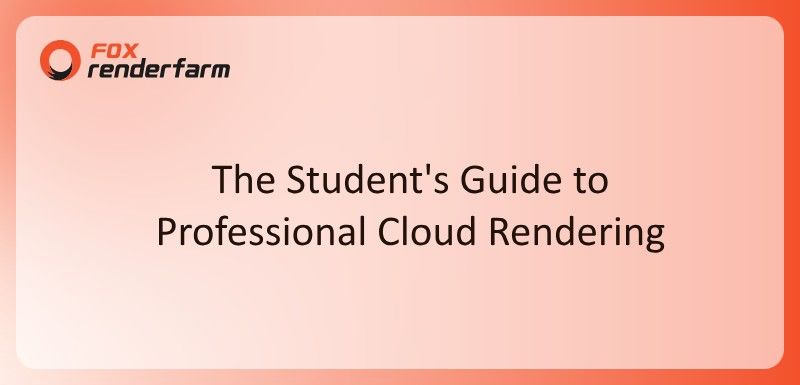To render in Blender is like watching your imagination come to life by turning creative sparks into creative visuals. However, some engines are very fast, while others are photorealistic. So, whether you create hyperrealistic scenes, stylized animation, or game-ready assets, the rendering engine you opt for will shape the quality of your work.
Thus, to assist you in making the finest choice, this guide will review the 5 best Blender render engines while highlighting their role. Each engine’s pros and cons will be reviewed along with pricing plans to determine if they suit your needs. Upon reviewing these, we’ll narrow down a 3D rendering software that is secure and supports multiple plugins and software.
Part 1. Definition and Role of Render Engines for Blender
The rendering engine is the "Add-on" of the 3D software that turns a 3D scene into an animation and is used in a more photorealistic way, unlike the default render. Some of the most common rendering engines are Corona Renderer, V-Ray, Redshift, etc., and they play a role in shaping the look, feel, and performance of your projects.

Among the best render engines for Blender, some of them focus on realism by using complex light simulation, while others focus on speed for stylized effects. While highlighting their role more explicitly, know that choosing the right render engine can dramatically change your workflow, especially depending on your goals.
Part 2. The 5 Best Render Engines for Blender in 2025
After knowing the basics, if you seek to pick the best Blender render, this section uncovers 5 of the best options for you. So, review the details along with the pros and cons, and find the perfect match for your creative goals:
1. Cycles
As a physically based path tracer for production rendering, Cycles is designed to offer photorealistic results. It accurately simulates how light interacts with surfaces by using features like global illumination, caustics, and ray-traced reflections. Additionally, there is support for multi-core CPU rendering with SIMD acceleration to improve performance across high-resolution scenes. Offering GPU rendering with NVIDIA technologies like CUDA and OptiX, it offloads heavy calculations to the graphics card and boosts speed.

Pros
- This best render for Blender supports GPU rendering on AMD graphics cards using HIP.
- Having multi-GPU support, Cycles lets users harness the power of two or more graphics cards simultaneously.
Cons
- As this render engine focuses on realism, it uses complex light calculations, which makes it slower than real-time engines.
- To get smooth performance and fast renders, powerful GPUs or CPUs are required.
Pricing Plans
- Free
2. Eevee
Eevee is based on rasterization, and it determines what surface is visible from the camera. Plus, it works on PBR principles that let artists use realistic materials and lighting techniques that closely mimic real-world visuals. Furthermore, this render engine’s material is generated using the same shadow nodes as Cycles. This makes it easy to switch between the 2 engines rather than creating a whole new material setup from scratch.

Pros
- Among Blender's best renders, Eevee uses a whole camera model to render a scene just to produce a focused image.
- Using a post-process filter, it can simulate the optical depth of field for blurring objects that are out of focus.
Cons
- In terms of attributes and properties, Eevee supports only 14 attributes from Geometry Nodes.
- As compared to Cycles, the size of the spotlight remains the same and doesn't alter the softness of the cone.
Pricing Plans
- Free
3. OctaneRender
Featuring 2-5x render speed, Octane RTX hardware acceleration boosts the speed of ray tracing by leveraging dedicated RT cores on NVIDIA RTX GPUs. Its new layered material system enables the artist to generate complex materials by stacking up 8 layers on top of the base layer. Additionally, this best Blender render engine has an updated Random Walk medium that creates ultra-realistic skin and scattering materials in Octane.

Pros
- It has Vectron™ software that uses vector-polygon geometry to create complex procedural shapes without using traditional mesh data.
- OctaneRender also enables you to choose procedural and OSL vertex displacement prior to rendering.
Cons
- This rendering engine only works with NVIDIA GPUs, as it relies on CUDA and RTX technologies, meaning users with AMD or Apple Silicon hardware cannot use it.
- The node system and UI differ from Blender’s built-in engines like Cycles or Eevee.
Pricing Plans
- Studio+ Monthly: €23.95/month
- Studio+ Annually: €19.99/month
4. Arnold
Being an advanced Monte Carlo ray tracing renderer, this engine can seamlessly switch between CPU and GPU rendering to balance performance and quality. Unlike other engines, its ray-traced subsurface scattering facility takes off the hassle of creating a complex setup and creating hyper-realistic skin. Regarding motion blur, the 3D motion blur interacts with shadows, reflections, and volumes to generate realistic motion effects that enhance speed and depth in animated scenes.

Pros
- Using the Catmull-Clark subdivision, this non-native best render engine for Blender creates smooth curved surfaces.
- Unlike other engines, it supports Open Shading Language to write custom shaders for more control.
Cons
- As a subscription-based rendering engine, it offers annual and monthly pricing plans that are pretty expensive.
- Arnold is designed for professional renderers, requiring a steep learning curve for amateurs.
Pricing Plans
- Annual: $430
- Monthly: $55
5. Redshift
As the best third-party Blender render that can be integrated through unofficial plugins, it offers UDIM support for working with high-resolution tile-based textures. These textures can be previewed in Cinema 4D's viewport materials in real time while working. Furthermore, it comes with simplified Ambient Occlusion AOV to isolate and adjust shadowing details in post-production. With USDZ support, it smoothly integrates into modern 3D pipelines, ideal for studios working across apps like Blender.

Pros
- With USDZ support, assets and scenes are to be exported or shared in a format that's compatible with Apple AR.
- Working as a biased GPU renderer, it sacrifices some physical accuracy, which makes it one of the fastest rendering engines.
Cons
- Redshift does not have an official Blender integration, so using it requires workarounds.
- Unkline Blender’s native render engine, Redshift, isn’t free and requires hefty charges to work on.
Pricing Plans
- Redshift Monthly: $49/month
- Redshift Yearly: $24.08/month
Pro Tip: Improve 3D Animation Rendering Efficiency
While working on intricate Blender scenes like lighting, hair particles, and 4K textures, have you stumbled across rendering where your local PC takes hours to render each frame? In such cases, sometimes the best render engines for Blender can fail to offer smooth performance, too. Thus, a cloud service like Fox Renderfarm can offload the heavy lifting since it comes with thousands of rendering nodes.

Unlike other solutions, this render farm service can efficiently operate across platforms like Windows, Mac, and Linux with 99.99% uptime. While rendering, it automatically detects the IT environment and matches the cloud infrastructure to optimize performance. For efficient workflow, this rendering supports major software like Maya, Blender, and Unreal Engine. What makes it compelling is its facility for production pipeline integration via API to automate task submissions.
Key Features
- Supports CPU & GPU Rendering: Renderfarm supports CPU and GPU rendering and gives artists the flexibility to choose the best rendering mode based on their project's needs. While ensuring fast performance, this also verifies compatibility with a wide range of render engines and complex scenes.
- Extra SSD Storage: Its high-speed SSD storage solution eliminates I/O bottlenecks, allowing large scene files, textures, and caches to load quickly. It is ideal for reducing lag and delay during rendering and improving overall efficiency.
- High-speed Transmission: Supporting Raysync's high-speed transmission, this rendering service enables lightning-fast uploads and downloads of large project files. Thus, it ensures smooth data transfer between your local device and the cloud, mainly for teams working with high volumes of data.
- ISO27001 Certification: Fox Renderfarm is ISO27001 certified, and it meets international standards for information security management.
- NDA Available: For users concerned about data privacy, a non-disclosure agreement is also available for extra peace of mind. This feature makes it a reliable choice for users who seek to work on sensitive content without data disclosure.
Conclusion
Summing up, rendering in Blender is highly dependent on the type of render engine you opt for since it shapes your project. Thus, this guide has gathered native and non-native Blender best renders along with extensive details. However, users looking for a dependable choice can consider Fox Renderfarm, a cloud-based rendering service that is not just compatible but also ISO27001-certified for an extra layer of privacy.













